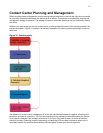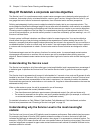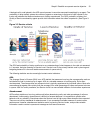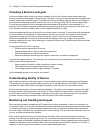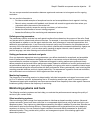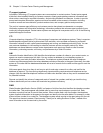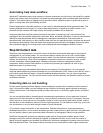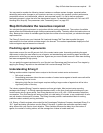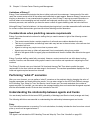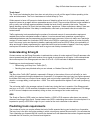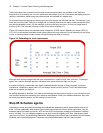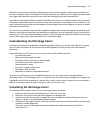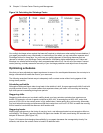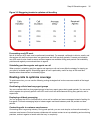28 Chapter 3 Contact Center Planning and Management
Customer surveys provide valuable supporting information on callers’ tolerance to delay, and expectations for
service. They address some of the following questions: Was the agent accessible? Was the caller put on hold
for too long? Was the agent courteous and responsive to my request? Was the agent well informed? Did the
agent provide the correct information and keep commitments? Contact centers use this information to
estimate the repercussions of poor service: escalated costs, duplication of work, lost customers.
As the economy moves towards individual, personalized services, new ways of handing calls continue to
emerge. These new features add to the complexity of collecting and measuring information. It is vital you
establish an integrated, reliable system for measuring the key indicators of performance: the efficiency of call
handling, the service callers experience, and their perceptions of that service.
Step #3 Forecast the Call Load
Finding the right balance between resources and traffic volumes is a critical step in effective contact center
management. Estimating resource requirements is particularly challenging as the number of calls and the total
duration of calls expected for a given time interval is difficult to predict.
Forecasting impacts contact center operations and performance in the following ways:
• The number of blocked and abandoned calls
• The level of service provided to callers and callers’ perception of service
• Agent workload, call behavior, and retention
• The accuracy and usefulness of schedules
• The success of periodic sales campaigns
Forecasting accurately
Forecasting is an imprecise science. The accuracy of your forecast increases markedly with the size of your
data sample. You take a year (or preferably two or three years) of ACD queue traffic data, examine trends in
Call Load patterns, break down the information, and determine the ACD Handling Times of the calls. You then
modify the forecast based on current contact center activities and other considerations, such as absenteeism,
agent breaks, holidays, and training.
The range of forecast dates you specify depends on the purpose of the forecast. Using long-term forecasts,
you can estimate future budgets and expansion opportunities, and establish corporate objectives. Using
short-term forecasts (of one to three months) you can determine seasonal staffing requirements, plan for
short-term sales campaigns, and assess upcoming hiring needs. You can use weekly, daily, hourly and half-
hour forecasts to tweak agent schedules and adjust for absenteeism.
Conducting forecasts
Conducting a forecast involves accurately estimating the three components of Call Load: the ACD Handling
Time, Wrap Up Time, and Calls Offered. After you run a forecast, it is useful to examine the data and make
adjustments based on present contact center conditions. You tweak the forecast by adding or reducing calls
based on your intuition and on information gathered by yourself and others.
To forecast the agent requirement, you
1. Examine trends in Call Load patterns.
2. Break the information down in to monthly, weekly, daily, half-hour, and 15-minute intervals that reflect
Call Load patterns.
3. Determine the handling times of calls.
4. Modify the forecast based on current contact center activities and other considerations, such as
absenteeism, agent breaks, holidays, and training.




